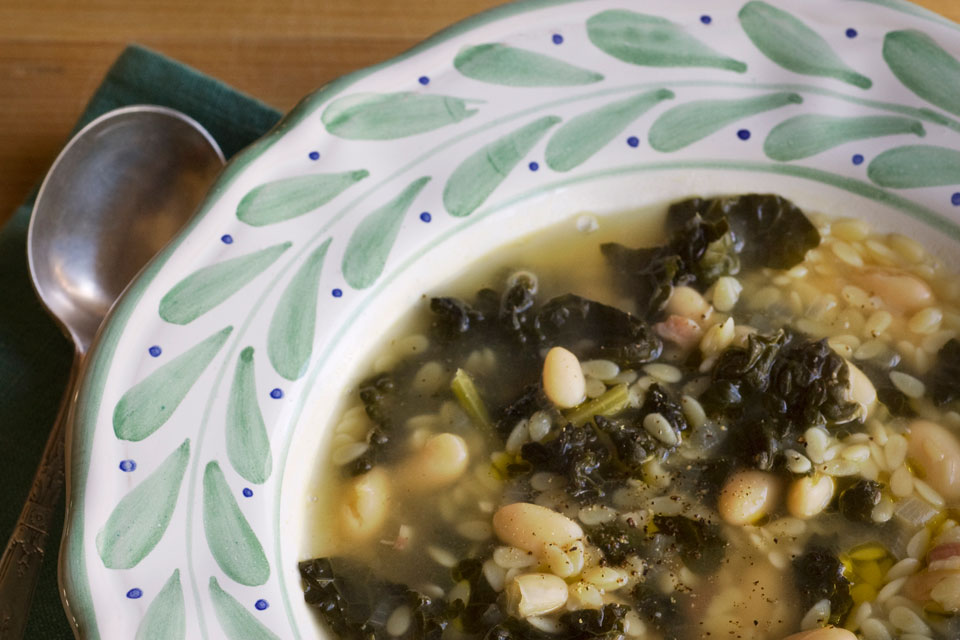The oldest medieval Italian manuscript from c. 1400 with recipes from Tuscany reveals the role of cabbage and kale – then and now
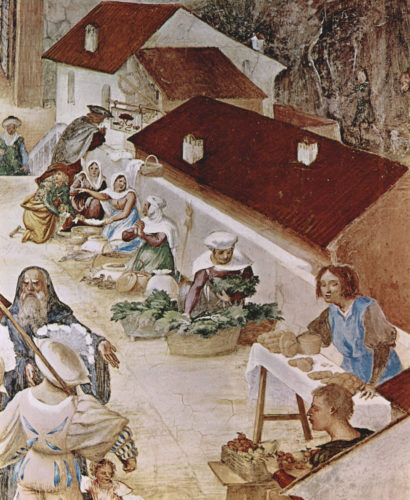
Exactly when people began to grow kale in their gardens is not known. Somehow, it is a bit odd, since the wild plant is highly tolerant of salt and lime, and its preferred habitat is along the Southern and Western European coasts, where it may still be found and used for “wild cooking”. Nevertheless, c. 2500 years ago, it migrated inland and became a staple in the gardens in Antiquity. Rich, filling and nutritious, it played a significant role in keeping the poor with C- and K-vitamins and nutrients during winter. Already Theophrastus (371 – 287 BC) mentions three kinds, a curly-leafed, a smooth-leaved, and a wild type. Later, Pliny the Elder listed seven varieties, Columella fourteen, and Apicius gives several recipes for how to cook the cauliculi, tender cabbage shoots. Perhaps more pertinent here is the fact that the 6th century Greek, Anthimus, though recommends to Theoderic and the Gauls at his court to boil their “mustard greens” boiled in salt and oil and serve them with bacon and vinegar to suit the taste. Mustard is apart from a plant that gives us its hot seeds, a kind of cabbage (brassica) and may be eaten as joyfully as other kales. Did Theoderic and his Franks not know of kale? Highly unlikely! Wild cabbage was and is ubiquitous on the beaches and sands of Northern Europe, and the word is found among the Celts (kol, kal, bresic, and kap). It appears the Latin term, brassica, is, in fact, Celtic. Reaching the Middle Ages, kales, cabbages, and turnips were well known as is also evidenced by the Carolingian sources, Capitulare de Villis and The Plan of St. Gall.
No wonder, then, that cabbage appears as the first entry in one of the oldest Italian cooking books from the Middle Ages: the Anonymous Tuscan Book for the Kitchen – Anonimo Toscana, Libro della Cucina. Containing 183 recipes – some of which are unique – it is preserved in a manuscript now in Bologna. It shares 101 recipes with the oldest cooking book, Liber de Coquina, from the 13th century. It also shares the organisation of the recipes, here beginning with a recipe for “Caulis Albi”. According to Anna Martelotti, this collection of recipes were originally put together at the court of Frederick II, Holy Roman Emperor from 1215. At some point, this collection was adopted by an anonymous cook in Tuscany. This manuscript can now be found in the University Library in Bologna.
De Caulis
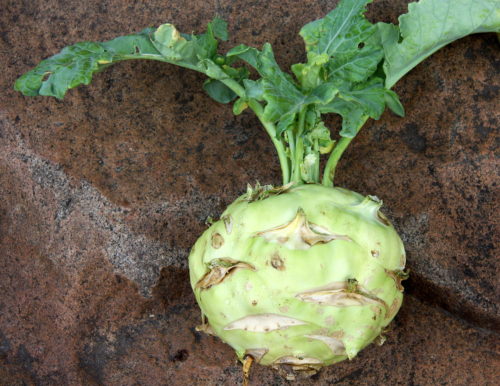
All-in-all there are four recipes, which can be varied according to whether it is a time of feast or fast:
- The first recipe explains that to cook “white cabbage” – probably turnip and kohlrabi. To prepare this, you should take the stalks of the cabbages, carefully remove the leaves (which would be dark green or black) and cut off the ends. The turnip should then be cooked in a pot of water and oil together with fennel bulbs and left until “rather thick”. Into this mash can be mixed oil, meat, capon broth, pepper, ground spices, eggs, saffron and then it could be “given to the Lord”.
- In the next version, the green leaves of the kale or cabbage are used. Here the kale or heads of cabbages are cleaned and added to a pot with meat and cooked. Next step is to remove the cabbage and place it in cold water, before adding it to a pot in which fennel bulbs have been cooked in water and oil. Apparently, this could be prepared early in the day as the recipe explains that the kale and fennel could be added to the large cauldron with the meat and some broth, perhaps from a capon and some oil “when it is time to eat” (Obviously a classic bolito misto!)
- In the third version, green cabbages should be cleaned and cooked with mutton, pork, or salted meat together with fennel bulbs, and parsley. When cooked, the meat should be removed, and the cabbage, fennel and parsley should be mashed. In this can be whipped, beaten eggs, pepper, saffron, or other ground spices. If the recipe is prepared on a fast day, it can be cooked with fish and oil.
- Finally, there is a variation, which calls for the heads of cabbages to be boiled before they are fried in oil together with sliced onions, chopped fennel bulbs, and sliced apples. To this should be added a little broth. When cooked, drain the vegetables and serve with spices sprinkled on top. Another version calls for serving it with (fried) lard, cheese, and perhaps poached eggs as well as the ubiquitous spices. “And give this to your Lord” – dara’ al Signore!
Looking at these recipes, it is evident that the cabbage in these recipes was served as the kind of mash, as we are wont to prepare with potatoes. Or it was boiled as a leafy vegetable like spinach, served cooked as a dish either on its own or sprinkled with fried lard (bacon) or poached eggs. These recipes for cooked kale or cabbage could apparently be served for the Lord at the high end of the table.
Kale Soup from Northern Italy
It is thus not odd that none of these recipes calls for kale as part of broth or soup, which is what we immediately think about when we see the “Kale Toscana” for sale in the Italian market or restaurants. Unfortunately, most modern people are not as familiar with the uses of kale, no to say the intricacies of cooking this Italian speciality. Hence, we have added the recipe for a modern version from Pisa.
To cook it you need a large iron pot. Begin by heating a generous dl of olive oil and then add a finely chopped onion, carrot, celery stalk, 100 gr of Italian pancetta (bacon), 50 gr of prosciutto fat, half a dl. of parsley, and half a dl. of basil leaves. Let all simmer slowly for ten minutes, while occasionally stirring. Now add 500 gr of green cabbage and 250 gr of red cabbage, both cored, and coarsely chopped (remember to remove the outer dry leaves). When mixed well together, add 1 ½ litre of water and 250 gr of white beans, which have been soaked before for 24 hours and then drained. Cook for an hour until the beans are soft. Then season the soup with salt and pepper, and add 100 gr of small macaroni. Finally simmer, until these are done, and serve scalding hot with bread and cheese to sprinkle on top. This recipe calls for the use of heads of cabbages, but traditional Kale Toscana is just as good to use (probably better).
In all likelihood the medieval recipes which calls for “heads” of cabbages, probably just means the “top”, with “white cabbage” referring to the roots, which were eaten mashed.
SOURCES:
The 14th century Manuscript, the Anonyma Toscana, is preserved as part of Manuscript 158, Bologna University Library. It was first published in Bologna in 1863. It belongs to a group of several manuscripts, with which it shares recipes, among which is the Liber de coquina identified as the cookbook belonging to the Imperial court of Frederic II and is dated to c. 1215.
Anonimo Toscano, Libro della cocina
An Anonymous Tuscan Cookery Book
READ ALSO:
I Ricettari di Federico II. De “Meridionale” al “Liber de Cocquina”
By Anna Martellotti
Published by Leo S. Olschki (2015)
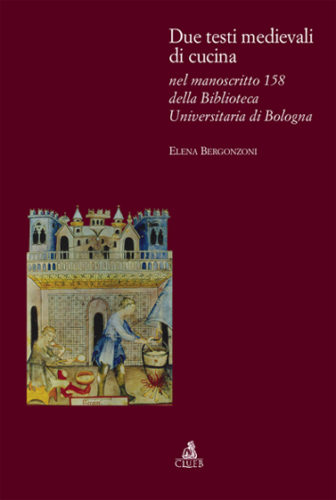 Due testi medievali di cucina nel manuscritto 158 della Biblioteca Universitaria di Bologna.
Due testi medievali di cucina nel manuscritto 158 della Biblioteca Universitaria di Bologna.
By Elena Bergonzoni
Clueb, Casa Editrice 2006
This edition of the orginial collection is purged from the editorial choices made in the editions from the 19th and 20th century.
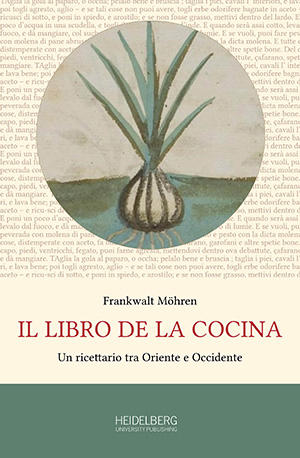 Il libro de la cocina
Il libro de la cocina
By Frankwalt Möhren
Heidelberg University Publishing 2016
FEATURED PHOTO:
Italian soup of beans and cabbage. © Tour Umbria
